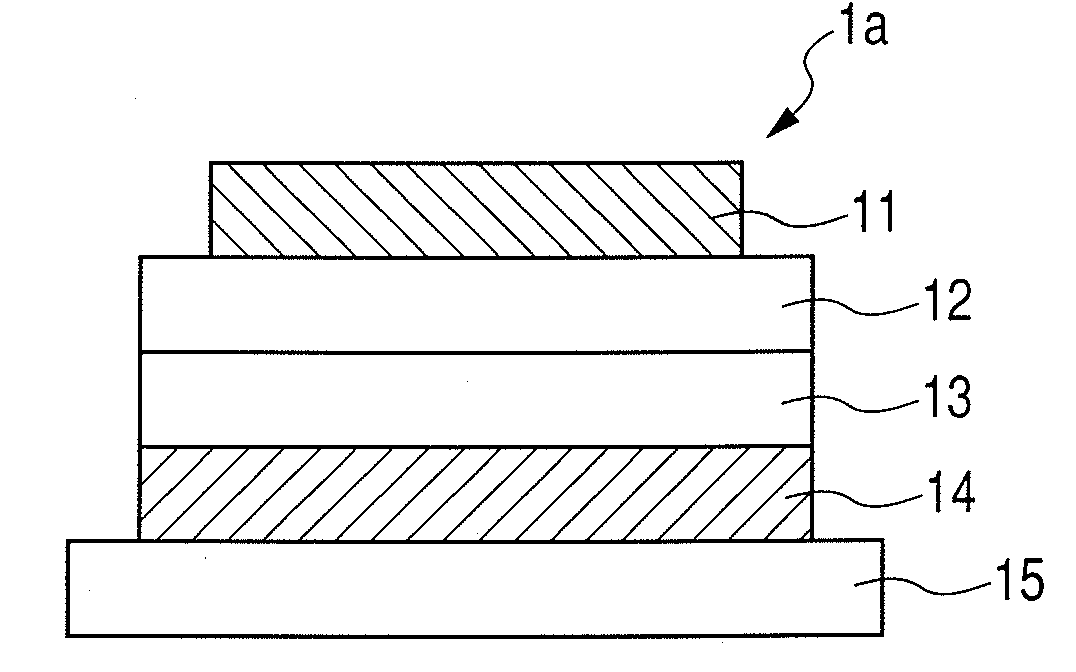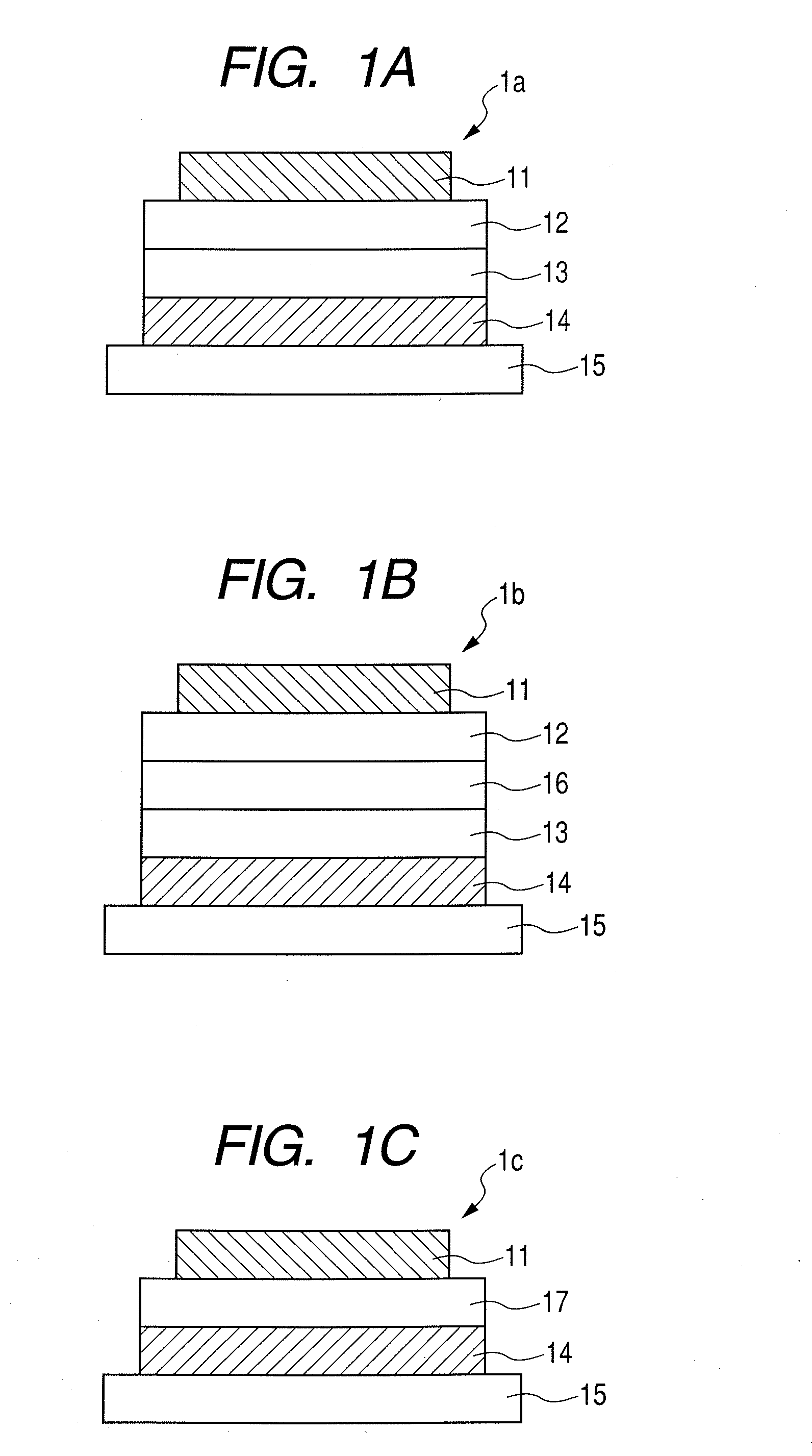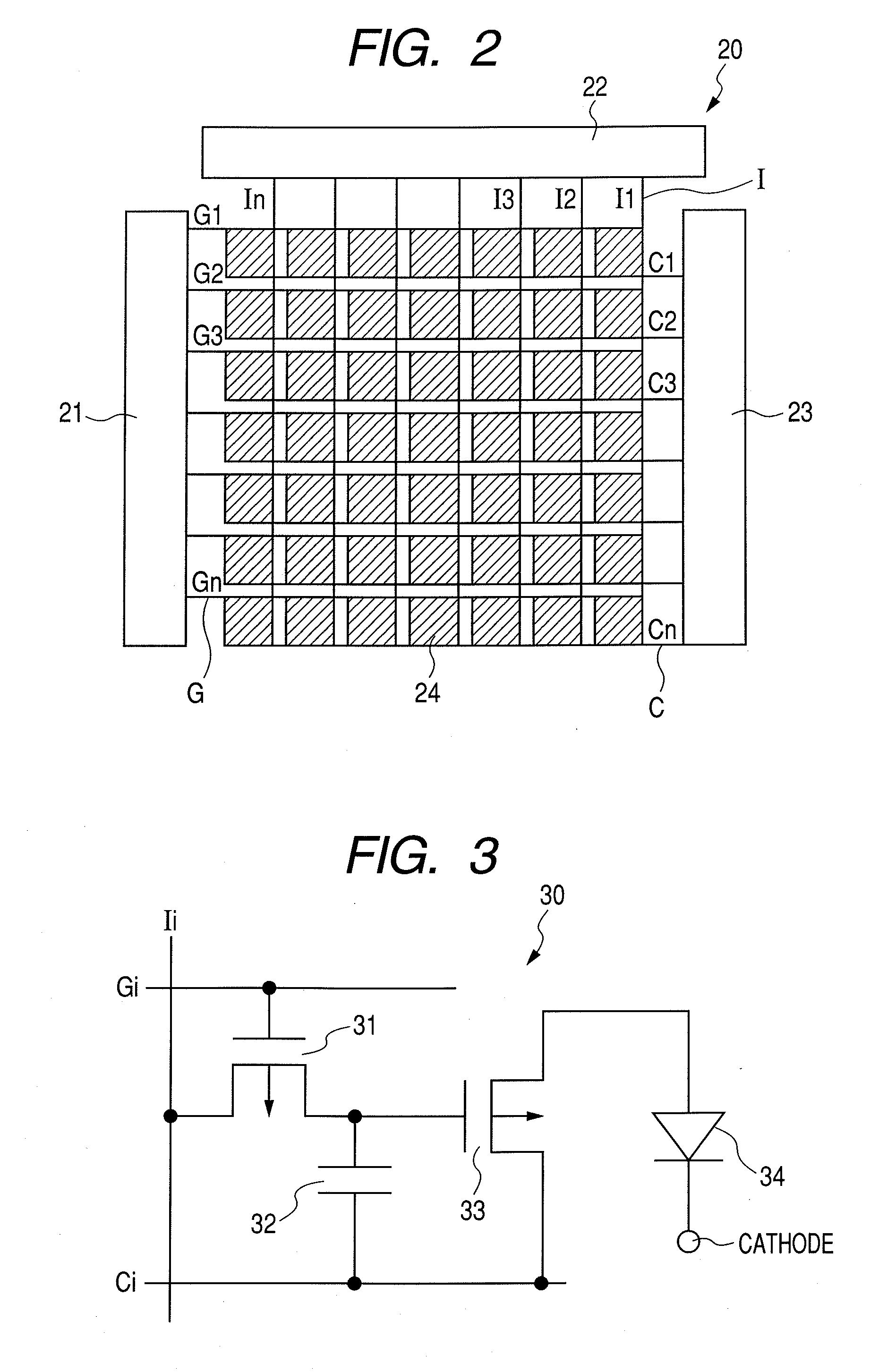Organic electroluminescent device
a technology of electroluminescent devices and organic materials, which is applied in the direction of discharge tubes/lamp details, discharge tubes luminescnet screens, other domestic objects, etc., can solve the problems of high crystallinity of materials, difficult to produce devices from compounds by employing application methods, and difficult to procure materials for producing such devices at a practical level. , to achieve the effect of high color purity, high efficiency and high durability
- Summary
- Abstract
- Description
- Claims
- Application Information
AI Technical Summary
Benefits of technology
Problems solved by technology
Method used
Image
Examples
synthesis example 1
Synthesis of Compound 1
[0110]Compound 1 was synthesized according to the following synthesis scheme.
[0111]First, 1 g (1.6 mmol) of Compound (1a) and 50 ml of dehydrated THF were put in a three-necked flask (300 ml). After that, under argon flow, 0.039 g (1.6 mmol) of Mg was put in the mixture, and the whole was stirred at room temperature, whereby a Grignard reagent was prepared. 0.24 g (0.8 mmol) of diphenylgermanium dichloride was put in the Grignard reagent, and then the temperature of the reaction solution was gradually increased to 100° C. After that, the reaction solution was stirred with heating for 20 hours while the temperature was maintained. After the completion of the reaction, the resultant was purified by column chromatography (developing solvent: heptane / toluene 1 / 1), whereby 0.57 g of Compound (1b) (Compound 1) was obtained (54% yield).
synthesis example 2
Synthesis of Compound 2
[0112]Compound 2 was synthesized according to the following synthesis scheme.
[0113](1) First, reagents and solvents shown below were put in a three-necked flask (300 ml).
Compound (2a): 1.03 g (1 mmol)
Compound (2b): 0.35 g (1 mmol)
[0114]Toluene / ethanol mixed solvent (weight ratio: toluene / ethanol=4 / 1): 100 ml
[0115]Saturated aqueous solution of Na2CO3: 20 ml
[0116]Next, 0.12 g (0.1 mmol) of tetrakis(triphenylphosphine)palladium was added to the mixture, and the whole was stirred at 80° C. for 24 hours in a nitrogen atmosphere within the flask. After the completion of the reaction, the resultant was purified by column chromatography (developing solvent: heptane / chloroform=5 / 1), whereby 0.82 g of Compound (2c) was obtained (68% yield).
[0117](2) First, 1.2 g (1 mmol) of Compound (2c) and 60 ml of dehydrated THF were put in a three-necked flask (300 ml). After that, under argon flow, Mg (1 mmol) was put in the mixture, and the whole was stirred at room temperature, w...
synthesis example 3
Synthesis of Compound 3
[0118]Compound 3 was synthesized according to the following synthesis scheme.
[0119](1) First, reagents and solvents shown below were put in a three-necked flask (1 L).
Compound (3a): 8.3 g (10 mmol)
Compound (3b): 3.8 g (1 mmol)
[0120]Toluene / ethanol mixed solvent (weight ratio: toluene / ethanol=4 / 1): 350 ml
[0121]Saturated aqueous solution of Na2CO3: 50 ml
[0122]Next, 0.92 g (0.8 mmol) of tetrakis(triphenylphosphine)palladium was added to the mixture, and the whole was stirred at 80° C. for 24 hours in a nitrogen atmosphere within the flask. After the completion of the reaction, the resultant was purified by column chromatography (developing solvent: heptane / chloroform=5 / 1), whereby 2.83 g of Compound (3c) was obtained (26% yield).
[0123](2) 1.2 g (1.1 mmol) of Compound (3c) and 60 ml of dehydrated THF were put in a three-necked flask (300 ml). After that, under argon flow, Mg (1 mmol) was put in the mixture, and the whole was stirred at room temperature, whereby a ...
PUM
| Property | Measurement | Unit |
|---|---|---|
| Pressure | aaaaa | aaaaa |
| Fluorescence | aaaaa | aaaaa |
| Purity | aaaaa | aaaaa |
Abstract
Description
Claims
Application Information
 Login to View More
Login to View More - R&D
- Intellectual Property
- Life Sciences
- Materials
- Tech Scout
- Unparalleled Data Quality
- Higher Quality Content
- 60% Fewer Hallucinations
Browse by: Latest US Patents, China's latest patents, Technical Efficacy Thesaurus, Application Domain, Technology Topic, Popular Technical Reports.
© 2025 PatSnap. All rights reserved.Legal|Privacy policy|Modern Slavery Act Transparency Statement|Sitemap|About US| Contact US: help@patsnap.com



